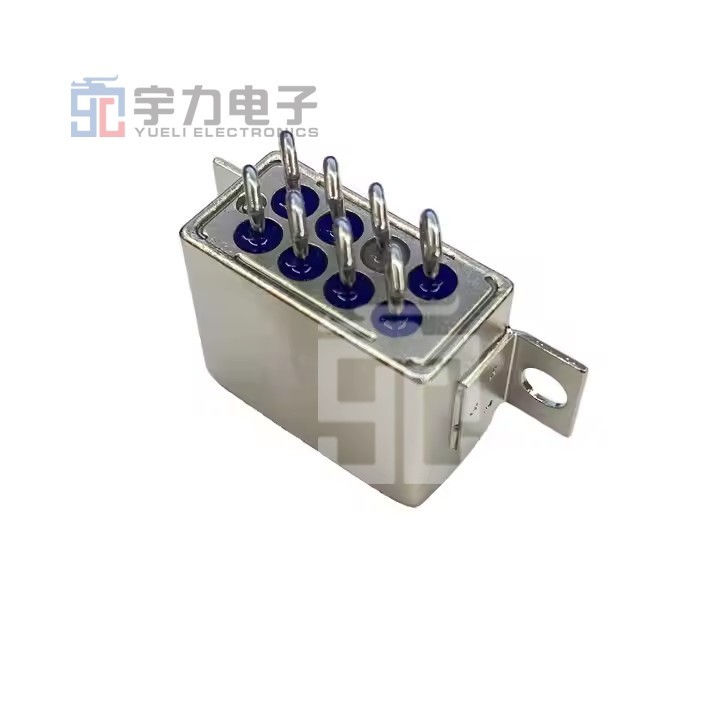Understanding High Power Relays: Essential Components for Modern Electronics
2025-07-11

High power relays are electromagnetic switches designed to control large power loads in electrical circuits. Unlike standard relays, which are typically used for low-voltage applications, high power relays can handle significant currents and voltages, making them indispensable in industrial, automotive, and commercial applications. The basic operation of a high power relay involves using an electromagnet to mechanically open or close contacts, thereby controlling the flow of electricity.
One of the primary advantages of using high power relays is their ability to isolate high voltage systems from low voltage control systems. This separation enhances safety and protects sensitive electronics from potential damage due to high voltage spikes. For instance, in a manufacturing plant, a control circuit can safely operate machinery by using a high power relay to manage the electrical loads without risk to the control equipment.
These relays find applications across various sectors. In industrial automation, high power relays are used for controlling motors, heaters, and other high-power devices. In the automotive industry, they play a critical role in managing electrical systems like lighting, power windows, and HVAC systems. Additionally, high power relays are utilized in renewable energy systems, such as solar power installations, where they help manage the flow of electricity between the solar panels and the storage batteries.
When selecting a high power relay for a specific application, several factors need to be considered. These include the relay's voltage and current ratings, the type of load (inductive or resistive), the switching speed, and environmental conditions. Choosing the right relay ensures not only optimal performance but also longevity and reliability of the entire system.
Furthermore, advancements in technology have led to the development of solid-state relays (SSRs) that can also handle high power loads. Unlike traditional electromagnetic relays, SSRs utilize semiconductor devices to switch loads, providing faster switching times, greater durability, and improved resistance to environmental factors. However, high power electromechanical relays still remain popular due to their simplicity and cost-effectiveness for many applications.
In summary, high power relays are vital for controlling and managing electrical loads in a variety of industries. Their ability to operate safely and efficiently under high voltage and current conditions makes them a staple in modern electronic systems. Understanding how high power relays function and where they are applied can help professionals in the field make informed decisions regarding their usage and integration into larger systems.
One of the primary advantages of using high power relays is their ability to isolate high voltage systems from low voltage control systems. This separation enhances safety and protects sensitive electronics from potential damage due to high voltage spikes. For instance, in a manufacturing plant, a control circuit can safely operate machinery by using a high power relay to manage the electrical loads without risk to the control equipment.
These relays find applications across various sectors. In industrial automation, high power relays are used for controlling motors, heaters, and other high-power devices. In the automotive industry, they play a critical role in managing electrical systems like lighting, power windows, and HVAC systems. Additionally, high power relays are utilized in renewable energy systems, such as solar power installations, where they help manage the flow of electricity between the solar panels and the storage batteries.
When selecting a high power relay for a specific application, several factors need to be considered. These include the relay's voltage and current ratings, the type of load (inductive or resistive), the switching speed, and environmental conditions. Choosing the right relay ensures not only optimal performance but also longevity and reliability of the entire system.
Furthermore, advancements in technology have led to the development of solid-state relays (SSRs) that can also handle high power loads. Unlike traditional electromagnetic relays, SSRs utilize semiconductor devices to switch loads, providing faster switching times, greater durability, and improved resistance to environmental factors. However, high power electromechanical relays still remain popular due to their simplicity and cost-effectiveness for many applications.
In summary, high power relays are vital for controlling and managing electrical loads in a variety of industries. Their ability to operate safely and efficiently under high voltage and current conditions makes them a staple in modern electronic systems. Understanding how high power relays function and where they are applied can help professionals in the field make informed decisions regarding their usage and integration into larger systems.
Previous:


